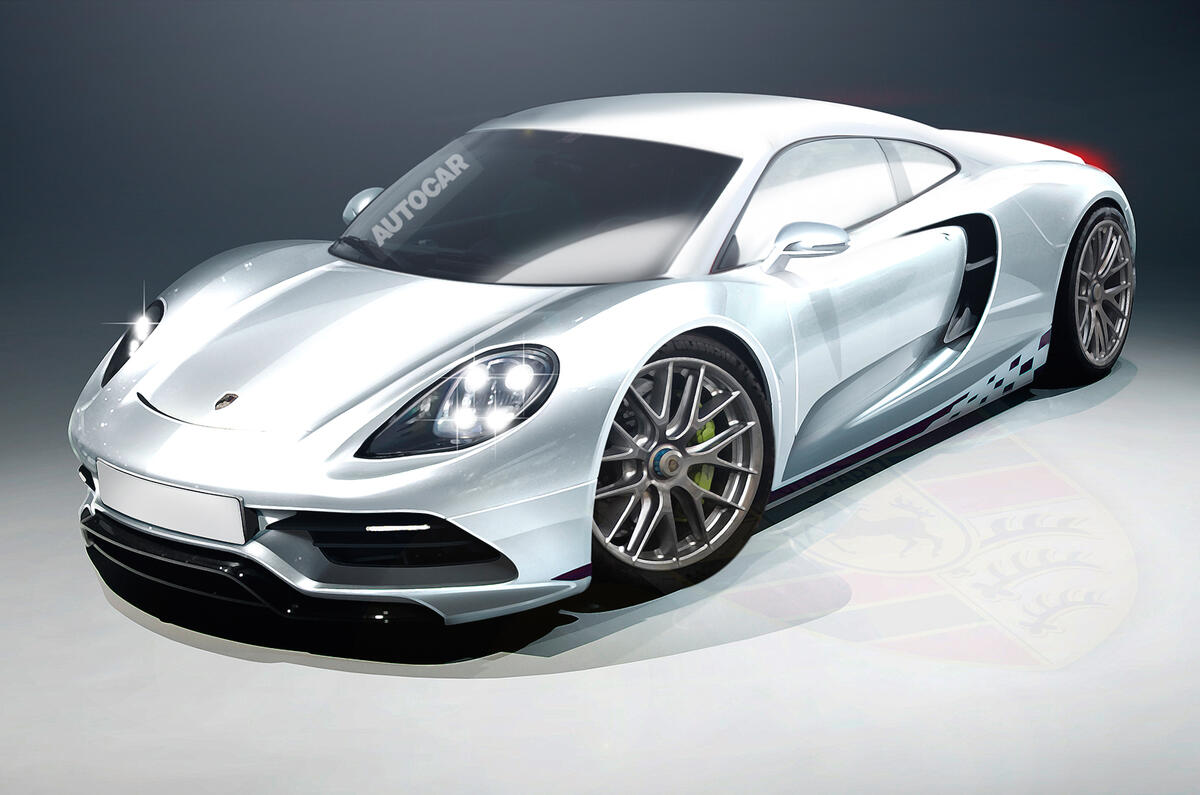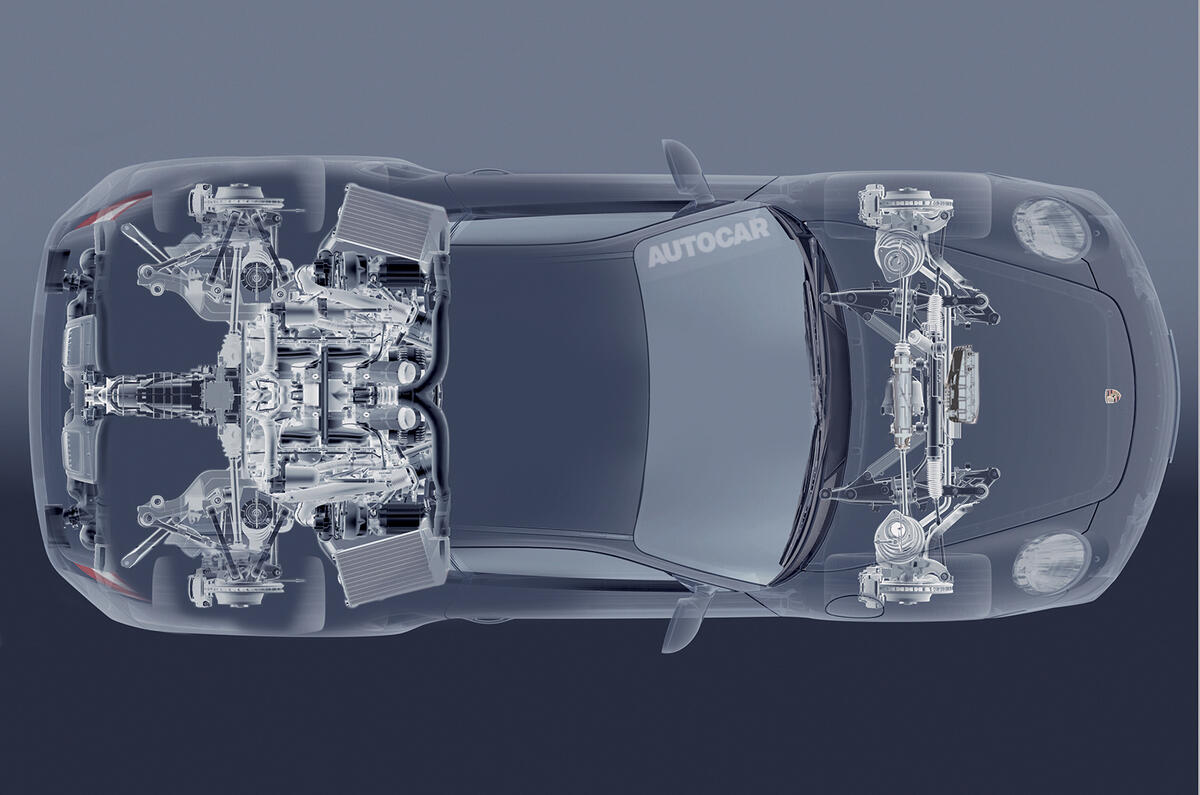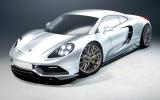Porsche is working on a new four-strong family of cars. The planned line-up includes a four-cylinder turbocharged version of the Boxster as well as a new eight-cylinder supercar which will look to challenge the Ferrari 458.
The as yet unnamed flagship model – thought to be carrying the development tag ‘988’ – finally addresses the long-held concern of many Porsche engineers: that the company cannot adequately compete with eight-cylinder Ferraris with the classic six-cylinder engine used by the Porsche 911.
There’s no clear news on the shape of the 988, although it will have strong shades of the 918 hypercar about its styling and in detailing such as the headlights. Expect a long rear deck, too, because of the mid-mounted flat eight engine.
The recent engine failures that stopped production of the new 3.8-litre 911 GT3 are being seen by some in the company as proof that the flat six has reached the end of its natural life in terms of increasing its cubic capacity.
Some years ago, Porsche engineers told Autocar that the “theoretical limit” for a flat six engine was “around 4.2 litres… after that, the weight of some internal components gets too great [for ideal balance]”.
Switching to a flat eight layout – expected to be sized at about 4.0 litres – will give Porsche the headroom to extract plenty of extra power for its flagship model, should it wish to, with various strengths of turbocharging.
It’s thought that the prototype engine is being tested with four turbos to push the output towards 600bhp – more than the 562bhp of today’s Ferrari 458 Italia, with more torque (likely to be above 400lb ft) available much lower down the rev range.
As Porsche pushes towards a medium-term sales target of 200,000 cars per year, the firm has also laid plans for a new architecture that will be used as the basis for all of its upcoming sports cars – mid-engined and rear-engined – and could also underpin the next-generation Lamborghini Aventador.
Porsche is also developing a brand-new family of turbocharged and normally aspirated boxer engines, which will come in four, six and eight-cylinder formats. The new engine family will generate much higher power densities and feature some innovative fuel-saving tech.
Sources indicate that the new architecture will come with the option of both mechanical and combined hybrid/electric all-wheel drive, the latter using an electrically driven front axle similar to that of the 918 Spyder.







Join the debate
Add your comment
Porsche
Also I am really surprised that there hasn't been a new 914.
I mean the VW Spyder Concept of 2005 and the VW BlueSport Concept of 2009 are crying out to be built by Porsche.
Smart Comments Today!
One person to be pointed out is JIMBOB. His idea of a Porsche 'Heritage' car, that being the 911 is a great, even brilliant idea.
The question I have for all of you is this though: is the Ferrari 458 Italia the greatest sports of all time now? It most definitely is a consideration but has it made it's way to the top of the pile now?
Ferrari the ultimate "BENCH MARK"